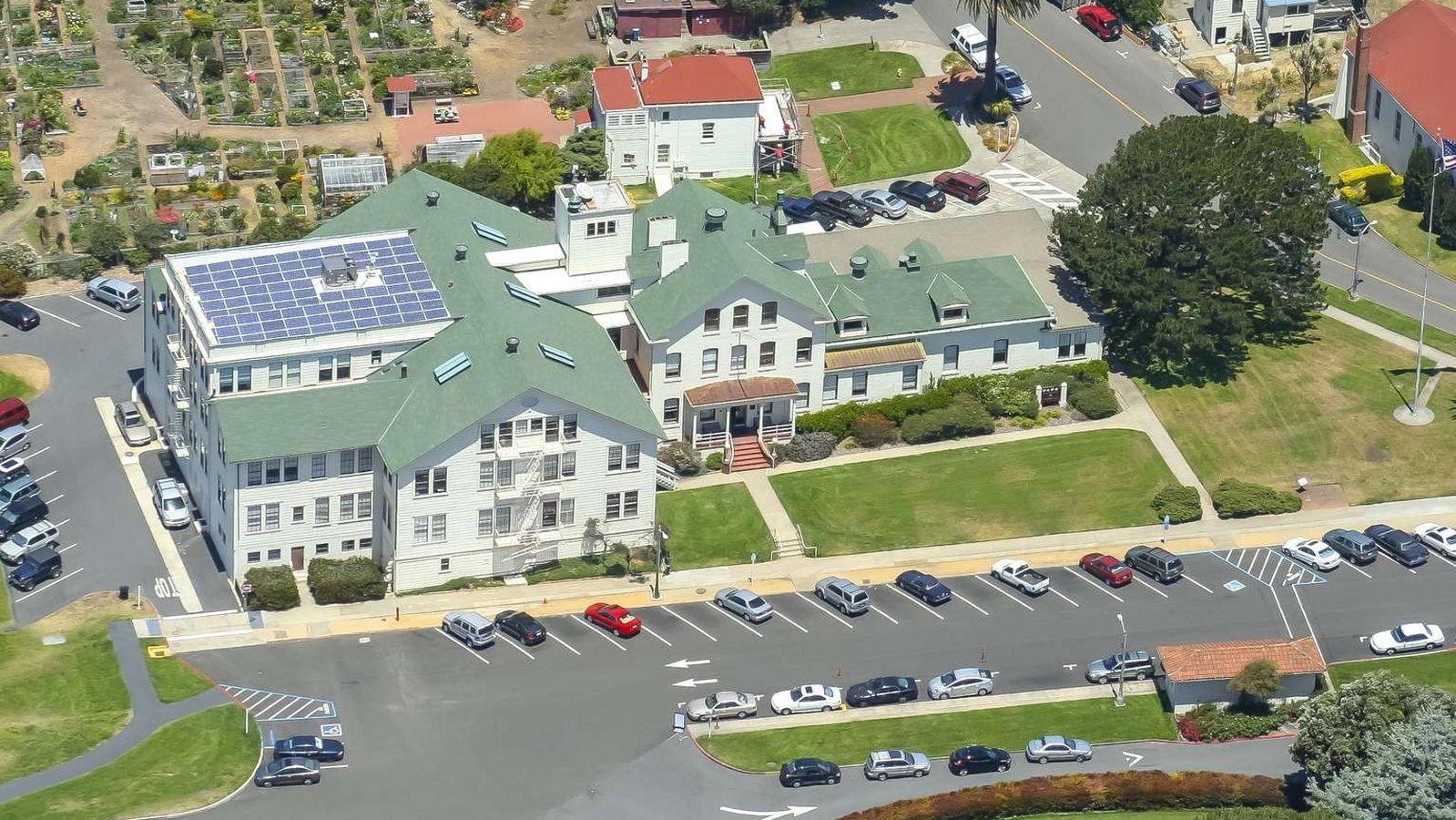Last updated: March 8, 2021
Place
3 - Fort Mason Historic District

Frank Schmidt NPS
WAYSIDE PANEL TITLE: Fort Mason Historic District
PANEL DESCRIPTION: The wayside faces north on the sidewalk lining the right side of Macarthur Avenue. It is 23 feet from the gate at Fort Mason's southeast's border.
VIEW FROM WAYSIDE: The wayside stands just off of a brick square that extends from the sidewalk. It faces a tree, and a sign that says the hostel is 0.3 miles away, park headquarters is 0.2 miles away, and the Fort Mason Chapel is 0.2 miles away. The sign says to leash pets, and to clean up any pet litter. There is parking along Macarthur Avenue, to your left. To your right there is lawn that extends to a large fence separating you from Van Ness Avenue.
TEXT: Protector of Empires (1797 to 1966). Over the centuries, different cultures have occupied this strategic bluff overlooking San Francisco Bay. Remains of Ohlone cooking hearths not far from this site indicate their presence before Spanish colonists of the Juan Batista de Anza Expedition arrived from Mexico in 1776. The colonists established a military presidio to the west and a mission to the east. The Spanish Army built Battery San Jose on this bluff in 1797 to deter attack from foreign ships at this northernmost frontier of their empire.'
When California became a state, the US Government set this land aside for a military reservation but did not occupy it until the Civil War, when the Union Army re-armed the old Spanish battery. The army post remained active as the US established its own empire across the Pacific, starting with the Spanish-American War of 1898. Fort Mason eventually became the primary logistics center for sending army troops and supplies into the Pacific into the 1960s.
TEXT: What makes a piece of land valuable?
MAP: A map of Yelamu Ohlone, Spanish, and early US Army sites in what is now San Francisco. The map is oriented so that north is at the top.
LEGEND: Designated military areas of 1851 are shaded dark green. Presidentially designated military boundaries of 1850 are marked by a dashed line. Spanish establishments of 1800 are represented as a star. Circles are used to demarcate Ohlone settlements pre-1776.
DESCRIPTION OF MAP FROM NORTH TO SOUTH: The southernmost site was an Ohlone Settlement called Chutchui. It was positioned inland in San Francisco. The Spanish establishment "Mission Dolores" was almost adjacent to this site. There was another Ohlone settlement further up and closer to the bay called Sitlintac, on the eastern side of San Francisco. The next site up was a Spanish establishment named Yerba Buena, which was positioned near the coast in what is now San Francisco's financial district. Every other site is separated on the map by a dashed line that depicts a presidentially designated military boundary. This boundary runs northeasterly across the top of San Francisco. It also cuts around the Presidio and Fort Mason. The southernmost site past this boundary was an unnamed Ohlone site in what is now Lands End. In the Presidio, there was one Ohlone site called Petlenuc, and two Spanish establishments called El Presidio and Castillo de San Joaquin. At what is now Fort Mason, there was an unnamed Ohlone settlement and a Spanish establishment named Batteria San Jose. A "You Are Here" circle indicates that you are currently just below Batteria San Jose.
DESCRIPTION OF IMAGE: An aerial black-and-white photograph in its lower right corner of lower Fort Mason's warehouses and military buildings. A large steam ship passes by in the bay. Photo is from 1970.
CAPTION: "San Francisco Port of Embarkation buildings crowd Fort Mason."
DESCRIPTION OF IMAGE: A black-and-white photograph of a cannon and rows of cannon balls. The scene looks out to the bay, Alcatraz Island, and the Marin Headlands in the distance. The photo is dated 1869.
CAPTION: "Cannon balls and field artillery overlook Alcatraz at Fort Mason."
DIRECTIONS TO NEXT WAYSIDE: Walk north and follow the sidewalk for 520 feet. Cross the driveway that leads to the General's Residence. The next wayside will be along the sidewalk and five feet from the end of this driveway.
